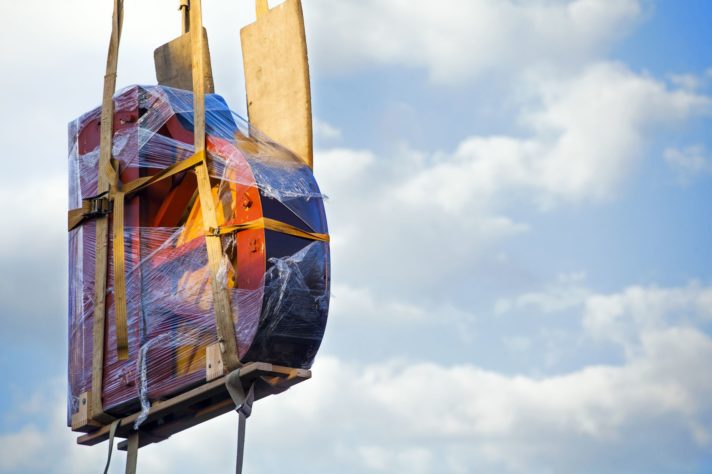When you want to ship a guitar across the country, start by gathering packaging supplies and cleaning and preparing the instrument. Wrap it carefully and place it in the appropriate case that matches its shape. Put the whole case in a durable crate, tape it, and label it well for transit.
How to Pack a Guitar for Shipping Across the Country
Shipping a musical instrument across the country requires meticulous care and attention. Knowing how to pack a guitar for shipping is paramount to ensure its safe arrival. Whether you’re relocating, a touring musician, or sending a cherished instrument to a new owner, these expert guidelines will guide you through the whole process while helping you safeguard your object every step of the way.
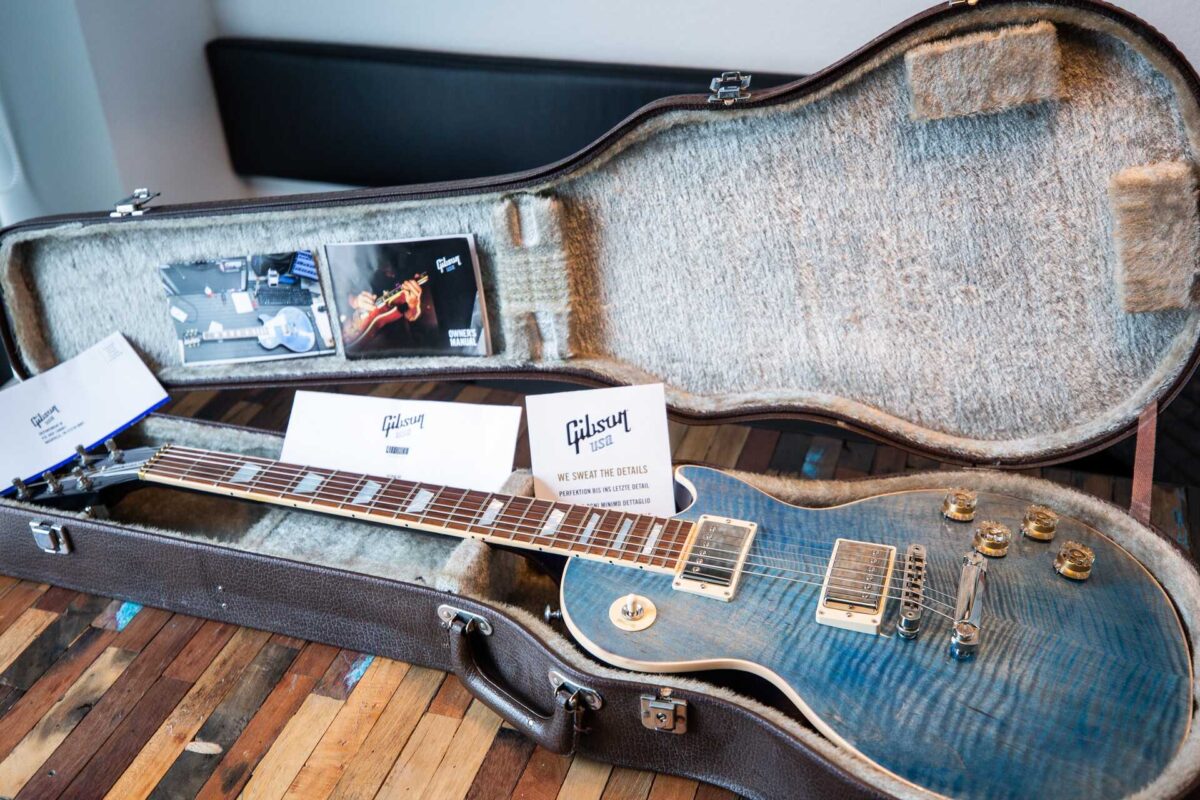

Gather the Right Packing Supplies
Relocating musical instruments is often not easy, and gathering the right packing materials is essential for safeguarding and packing a guitar for shipping. To ensure your instrument remains protected from potential mishaps, consider the following list of must-have supplies:
- Hardshell or ABS case – they provide the primary protection for your instrument, cradling it against impacts,
- Bubble wrap – ideal for wrapping the headstock, neck, and any protruding parts and for filling gaps within the case,
- Soft cloth or towels – use these to cushion the instrument inside the case, especially around the body and neck,
- Sturdy container – a corrugated box slightly larger than the case allows for padding around the case,
- Foam peanuts or inserts – help fill voids in the box and absorb shocks during transit,
- Silica gel packs – essential for controlling the humidity inside the case, especially if it’s shipped between different climates,
- Duct tape – to securely seal the container,
- Labels and caution stickers – for clear labeling of the box’s content, ensuring handlers know it contains a fragile musical instrument.
By assembling different packing materials, you’re taking a critical step in learning how to pack a guitar for shipment, ensuring its safety during the journey.
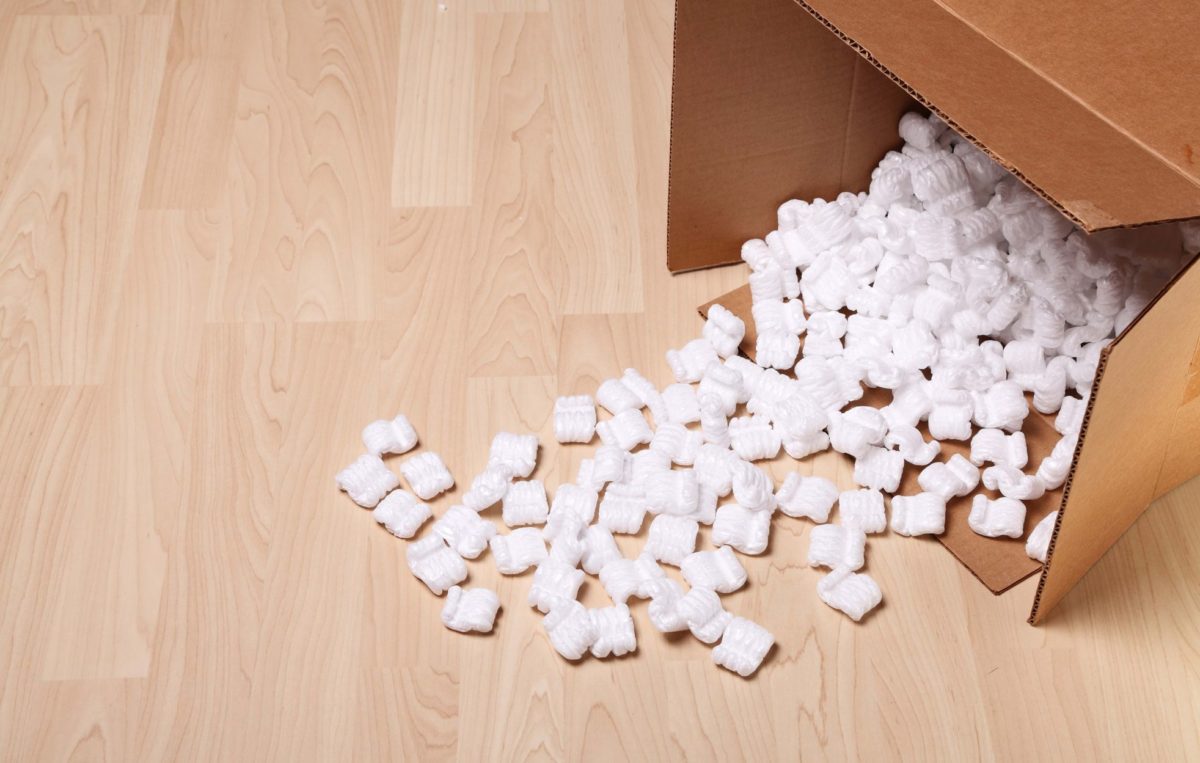

How to Pack a Guitar for Shipping – Begin With the Preparation of the Instrument
Proper preparation and planning of your relocation acts as a safeguard against the unpredictable nature of shipments, thereby maintaining the instrument’s value and tone quality. The intricacies of a guitar, from its neck and strings to the body and tuning pegs, are susceptible to pressure, temperature fluctuations, and impacts. By meticulously preparing the instrument, we are not merely preserving its structural integrity but also ensuring that it arrives at your future location in the same condition as it left.
Loosen the Guitar Strings Only Half a Step or Not at All to Avoid Losing Its Perfect Setup
Loosening the guitar strings during shipping is a commonly advised practice. However, it’s crucial to strike a balance. Loosening the strings only half a step or not at all can be beneficial in preserving its perfect setup. This means that the neck truss rod, which counters the tension from the strings, remains relatively unaffected.
A dramatic change in string tension can offset the guitar’s setup, which is finely calibrated for optimal playability. By maintaining a slight tension or keeping it unchanged, one ensures that the neck remains stable and its setup remains as close as possible to its original state, minimizing the need for adjustments upon arrival.
Remove Any Accessories or Loose Parts From the Guitar
Before wrapping or cleaning your instrument, it’s essential to remove any accessories or loose parts. If you are looking into how to ship an acoustic guitar, start by safely detaching the strap from both ends, ensuring that the instrument is supported and won’t fall. If you have a removable pickguard or capo, gently unclip and unscrew them.
For electric guitars, disconnect any cables and remove battery compartments in case your instrument has active electronics. If you have a tremolo or Floyd Rose bar, unscrew it, wrap it, and transport it in a separate compartment of your cases, usually placed as a support to the neck of your instrument. Ensure that you keep all small parts, like screws, Allen wrench keys, or picks, in a safe place or a Ziploc bag so they don’t get lost. This process ensures the guitar’s safety and provides easier access for move-out cleaning or regular maintenance.
Follow Fender’s video below for some useful tips on how to properly check and clean this instrument.
Place a Soft Cloth or Tissue Paper Between the Strings and Fretboard After You Clean It
This seemingly simple act provides a cushioned barrier, preventing any inadvertent scratches or dings that might occur due to the strings vibrating or shifting in transit. However, based on the wood type of your fingerboard, use appropriate cleaning supplies and oils to remove dead skin and dirt before you restring your instrument.
Only then slide the thin layer of protection in between the fretboard and strings. Moreover, the cloth or tissue can act as a deterrent against potential moisture accumulation, safeguarding the fretboard from swelling or warping.
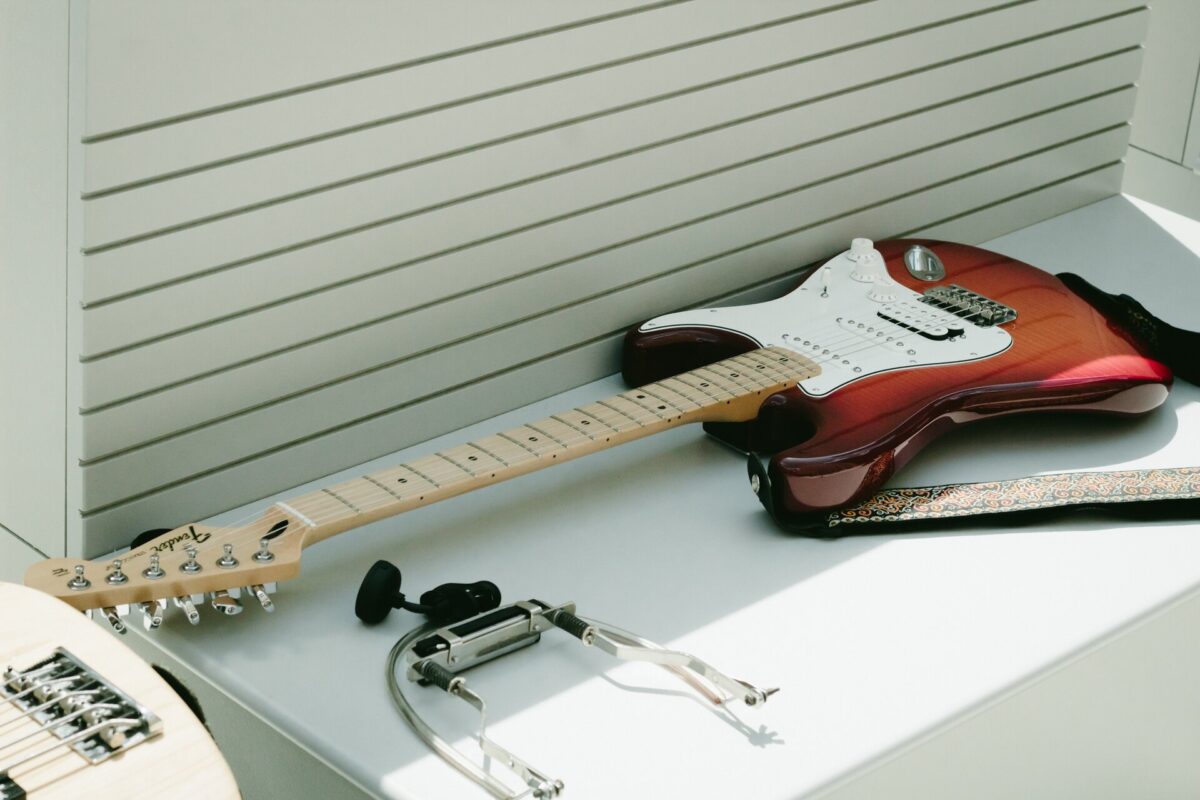

Carefully Approach the Task of Wrapping the Guitar
Begin by carefully wrapping the entire instrument with bubble wrap, ensuring it provides both cushioning and protection against potential impacts. Use duct tape to hold the bubble wrap in place, but be sure it’s snug without being overly tight, as undue pressure can harm the instrument.
It’s essential to give special attention to the more vulnerable areas of the instrument, such as the headstock and bridge, by adding extra layers of protection. This meticulous wrapping ensures that the object remains safe and undamaged during its relocation to another state or while in storage.
Place the Guitar in the Hardshell Case
Carefully slide your bubble-wrapped instrument into the well-padded interior of the case. It’s vital that the fit is snug and the instrument doesn’t shift or move around. This will prevent any movement and potential damage from jostling during transport.
After ensuring the instrument is safely positioned, close the lid of the case. Make sure to latch the hardshell case securely, confirming that all the locks or clasps are fastened, guaranteeing the instrument’s safety and security during its travels.
ABS Case Is a Durable Solution as Well
An ABS case is constructed from a durable and lightweight thermoplastic. Known for its resilience, ABS offers excellent protection against impacts for one or more instruments if you opt for a larger case, making it a preferred choice for musicians on the go and those flying frequently.
These cases are not only resistant to weather conditions, including moisture and temperature fluctuations when traveling through different climates but are also tailored with molded designs to fit specific instrument shapes snugly. Despite their robustness, they remain relatively light. Inside, the case typically features foam or plush lining, ensuring the instrument is cushioned and safe from scratches.
Secure locks and latches further guarantee the safety of the instrument within this sturdy enclosure. All these features make this case a good but a tad bit pricey solution for transportation, so make sure it fits your relocation budget.
Moving
Our mission is to bring high quality, long distance moving services to every customer.
Packing
Our expert moving teams are trained to ensure the safety of your personal belongings.

Storage
Cross Country Moving Company is the most trusted name in auto industry in the country.
Secure Your Case in a Sturdy Container
One of the better relocation hacks for safeguarding and transporting instruments to their new home is to start by filling the bottom of the crate with foam peanuts or foam to create a cushioned base. Then, place your case in the center of this box.
Surround the case with additional cushioning like bubble wrap or crumpled packing paper, ensuring it’s well-isolated from direct contact with the box’s sides. This careful placement and padding will ensure that your instrument reaches its destination in the same pristine condition it was when packed.
Seal and Label the Shipping Box
Begin by closing the shipping crate and using duct tape to secure it firmly, ensuring its contents stay protected. To alert handlers to the delicate nature of its contents, use labels for boxes and stickers and leave “fragile” and “handle with care” labels on all sides of the box.


Hire Cross-Country Movers to Handle All the Wrapping for You
Keep in mind that hiring long-distance movers can alleviate the relocation stress, labor, and anxiety associated with relocating, especially when it comes to boxing-up fragile items, such as packing musical instruments. These professional cross-country moving companies offer comprehensive long-distance moving services that go beyond just shipping your belongings to another state.
Cross Country Moving Company offers professional packing services, ensuring that each item, including instruments, is wrapped and packed to industry standards, providing maximum protection when moving cross country. For those in between homes or looking for a temporary place to store their belongings, we also offer storage solutions, guaranteeing the safety of your items in secure, climate-controlled facilities.
Furthermore, recognizing the value and fragility of musical instruments, we provide specialized insurance coverage. This ensures that in the rare event of damage or loss during the move, you’re adequately compensated. By entrusting your relocation to our long-distance moving company, you’re investing in peace of mind and the safe relocation of your treasured instruments.
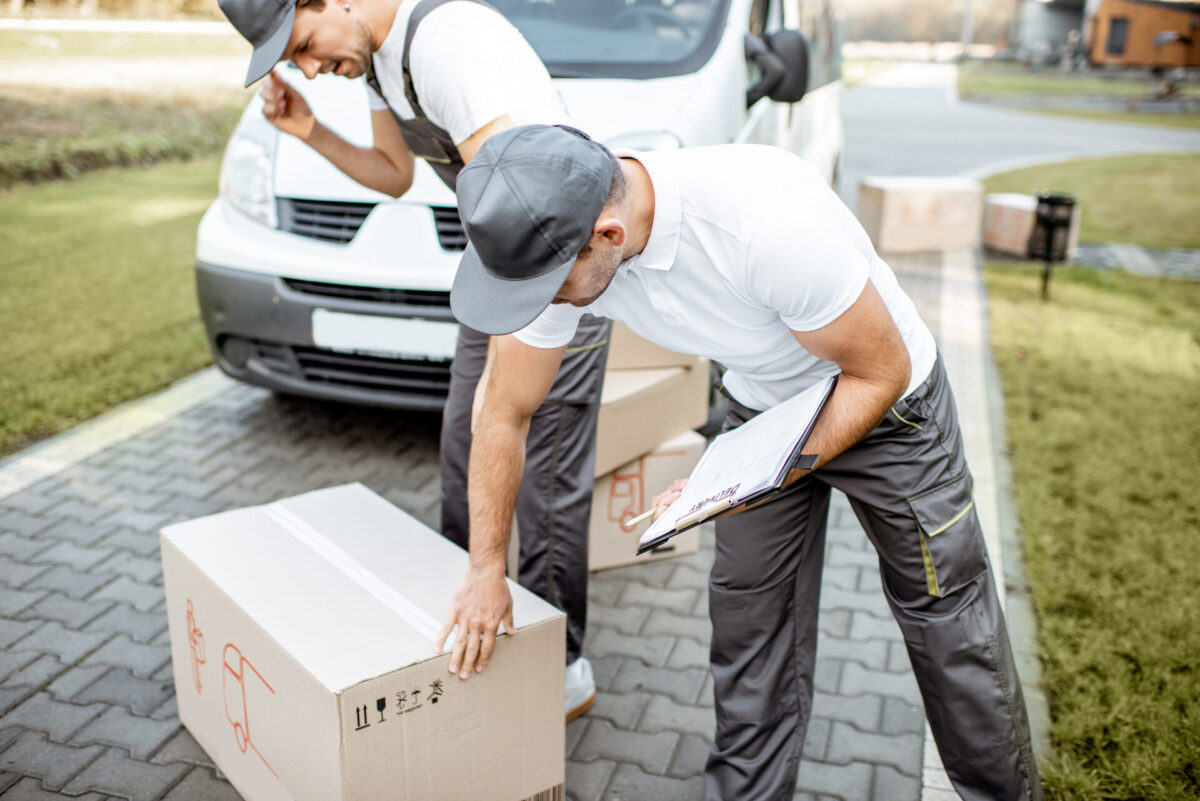

Follow Our Instructions, and Your Instrument Will Be Safely Delivered to Their New Home
At Cross Country Moving Company, we understand the sentimental and monetary value of your possessions. By following our guidelines, you can rest assured that your instrument will arrive at its future home in pristine condition.
In the end, we’re not just relocating some mere object. We’re helping you safeguard your musical treasure and preserve memories, craftsmanship, and passion. Should you have any questions or need further guidance, please do not hesitate to contact us. We’re here to support every strum you take, beat you make, string you break, and note you bend – we’ll be cheering for you.
FAQ
How to Package a Guitar for Shipping Across the Country?
Begin by detaching any removable accessories and using bubble wrap to carefully envelop the entire instrument, giving extra padding to delicate areas. If you have a hardshell case, place the wrapped instrument inside. Then, place the cased instrument inside a sturdy shipping box filled with additional cushioning material to ensure no movement during transit.
What Packing Supplies Do I Need to Ensure the Guitar's Safe Transportation?
You’ll need bubble wrap for wrapping the instrument, a hardshell case (if available) for added protection, foam peanuts or inserts for cushioning, a sturdy shipping box large enough to fit the case, duct tape to seal the box securely, and labels indicating the contents are fragile.
How Can I Protect Vulnerable Areas of the Guitar, Such as the Headstock and Bridge?
Focus on wrapping these areas with additional layers of bubble wrap. The headstock, in particular, is prone to snapping if impacted, so ensure it’s well-cushioned. Using foam inserts or padded materials around the bridge will also protect it from pressure.
What Type of Shipping Box Should I Use for Packing the Guitar?
Opt for a heavy-duty, corrugated cardboard box. Some shipping companies offer boxes specifically designed for instruments. If possible, double-boxing can provide an added layer of protection.
Is a Hardshell Case Necessary for Shipping a Guitar?
While it’s possible to ship an instrument in a specialized cardboard box, a hardshell or ABS case offers superior protection against potential impacts. If the instrument is valuable or has sentimental value, it’s worth investing in any of these cases for shipping.
Are There Any Special Labels I Should Put on the Shipping Box for a Guitar?
It’s crucial to label the box with “Fragile” and “Handle With Care” warnings. Additionally, an “Up” arrow can indicate the correct orientation of the box. Including these labels alerts handlers to the delicate nature of the contents and reduces the risk of mishandling during transport.
Should I Get Additional Insurance Coverage for the Guitar During Shipping?
While a cross-country moving service does include mandatory insurance, it’s often not enough to cover the damages done to your instrument in case of an accident. Additional insurance ensures you’re financially covered should anything happen to the item during transit. Determine the instrument’s value and ensure that the insurance package you get can cover that amount or slightly higher.
What Should I Do Upon Receiving the Guitar at the Destination?
Before opening the container, inspect it for any visible damage. Photograph any dents or tears as evidence. Carefully unpack the box and inspect the instrument for any damage, making note of any issues.
Are There Any Specific Precautions to Take When Unpacking the Guitar After Shipping?
If the instrument has been in a colder environment, allow it some time to acclimate to room temperature before playing. Leave the instrument out in the open for the night to acclimate to the new environment and check its tuning in the morning.
Can I Ship Accessories or Other Items Along With the Guitar in the Same Package?
Yes, you can ship accessories or other items with the instrument. However, ensure each item is securely wrapped and separated to prevent movement or damage. Items should not press against the instrument or its vulnerable parts. Using dividers or additional padding can help keep everything in place and protected during transit.
